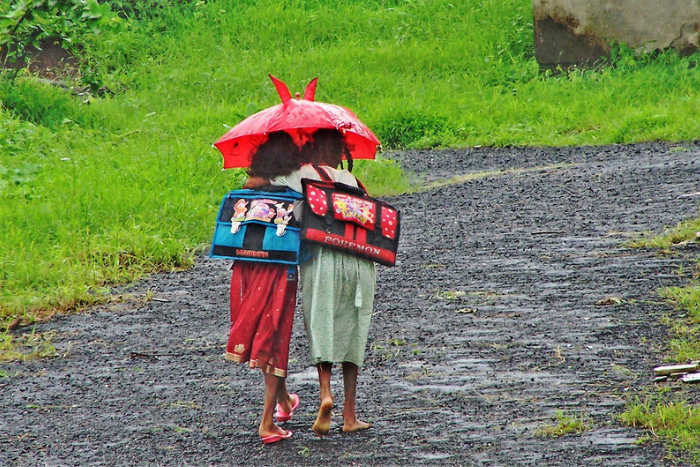State-run India Meteorological Department (IMD) predicted a “normal” monsoon rainfall up to 96% of the long-period average or LPA (error +/-5%) of 86.86 cm for 2023. The IMD expects the adverse impact of El Nino to be neutralised, HT reported, adding that the department follows different categorisations for rainfall in meteorological regions. For all-India measurements, there is a 35% probability of normal and a 29% possibility of below-normal monsoon this year, IMD said, adding that El Nino Southern Oscillation (ENSO) neutral conditions prevailed and El Nino was expected to develop in July.
Private forecaster Skymet Weather predicted “below normal” rainfall between June and September, citing a strengthening El Nino phenomenon. Climate models also warn of development of “super El Nino” by the end of 2023. The annual monsoon forecast is much awaited and both Skymet and IMD issue multiple forecasts. Early forecasts, including those of El Nino, tend to miss the target, as they are more accurate closer to the event.
Most heat action plans in India underfunded, lack local context: Report
A new report by the Centre for Policy Research (CPR) assessed 37 heat action plans (HAPs) across 18 states in India to understand how well prepared the country is to deal with heat waves. Most HAPs are not built for local context and have a simplified view with a general focus on dry extreme heat. Only 10 out of 37 HAPs reviewed seem to establish locally defined temperature thresholds, although it is unclear whether they take local risk multipliers, such as humidity, hot nights, and duration of continuous heat among others, into account to declare a heatwave. The plans are also underfunded and poor at identifying and targeting vulnerable groups. Only two of 37 HAPs explicitly carry out and present vulnerability assessments and only 11 of 37 HAPs discuss funding sources. HAPs are India’s primary policy response to economically damaging and life-threatening heat waves.
India ranks fifth among top 10 contributors to global warming: Study
A new study published in Scientific Data finds that India is responsible for 0.08°C of warming from the 1850s through 2021. Overall, the country ranks fifth among the top 10 contributors to warming. The United States topped the list with a contribution of 0.28 degrees Celsius of rise in temperature. China stood second with 0.20°C of warming, followed by Russia at 0.10 degrees Celsius, and Brazil at 0.08°C. Indonesia, Germany, the United Kingdom, Japan and Canada each contributed 0.03-0.05°C of warming. Researchers calculated the Nationally Determined Contributions (NDCs) of each country and the analysis shows that CO2 is responsible for 1.11°C of warming compared to methane at 0.41°C and nitrous oxide at 0.08°C.
Slowdown in Antarctic deep ocean currents could have disastrous effects on climate
New research by a team of Australian scientists found that the deep-water flows which drive ocean currents could decline by 40% by 2050, resulting in the reduction of the ocean’s ability to absorb carbon dioxide from the atmosphere as well impacting wildlife. The currents carry vital heat, oxygen, carbon and nutrients around the globe. The report outlines how ocean currents are partly driven by the downward movement of cold, dense saltwater towards the sea bed near Antarctica. But as fresh water from the ice cap melts, seawater becomes less salty and dense, and the downward movement slows. These deep ocean currents in the northern and southern hemispheres have been relatively stable for thousands of years, but they are now being disrupted by the warming climate.
Compound drought heat wave events pose a huge risk to future socio-ecosystem productivity: Study
Climate change is one of the most serious threats to society and is expected to generate more extreme weather events. A recent study has found that the risk of compound drought heat wave events (CDHEs) and their intensity has intensified in recent decades and is expected to increase in the future. There is no distribution of extreme CDHEs in high-altitude areas such as North America, northern Eurasia, and the Qinghai-Tibet Plateau. However, northern Africa, Southern China, and tropical areas are more prone to extreme heat and drought events. Population exposure to severe CDHEs under 2.0 °C and 3.0 °C global warming is expected to increase by 108 and 266 million, respectively, compared with the 1.5 °C global warming. The impact will also be felt on crop growth and food security, resulting in serious economic losses. While drought reduces the yield by slowing down photosynthesis and shortening the growth season, heatwaves directly affect crop growth by reducing pollen viability and damaging tissues, and indirectly reducing the yield by decreasing soil moisture.
About The Author
You may also like
Cyclone Michuang triggers flash flooding along India’s southern coast; 5 lives lost so far
Swinging in the rain: India needs to redefine what a “normal” monsoon looks like
Global ocean warming and rising, growing more acidic: Report
Billions at risk of heat and humidity exposure beyond human levels: Report
Climate change threatening almost all SDGs, only 15% on track: UN Report


